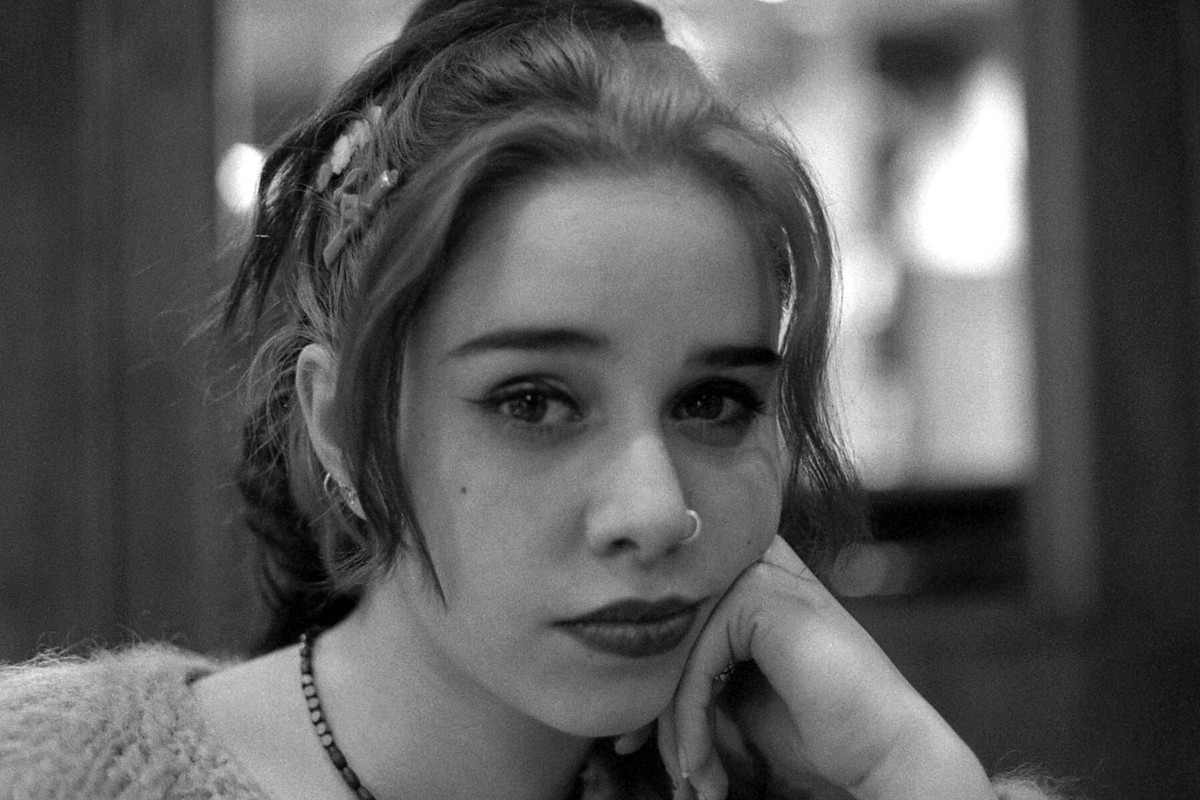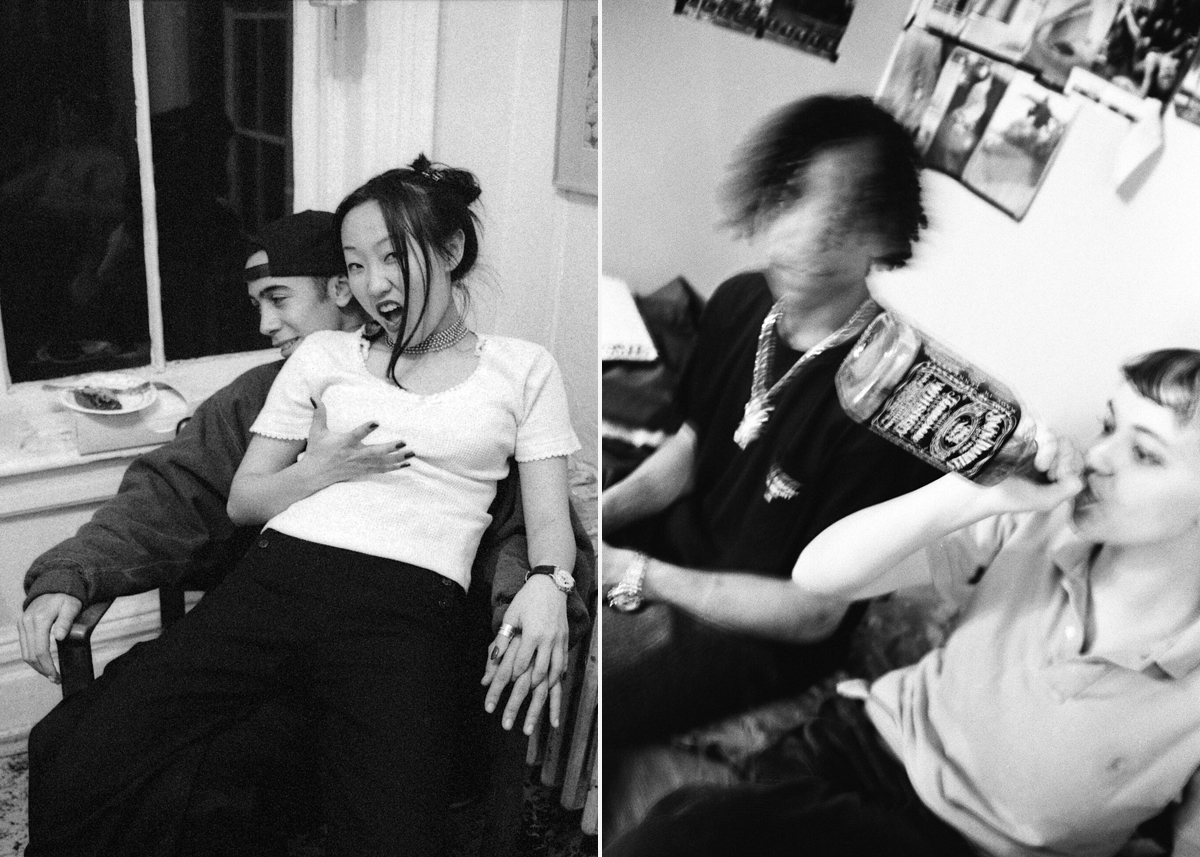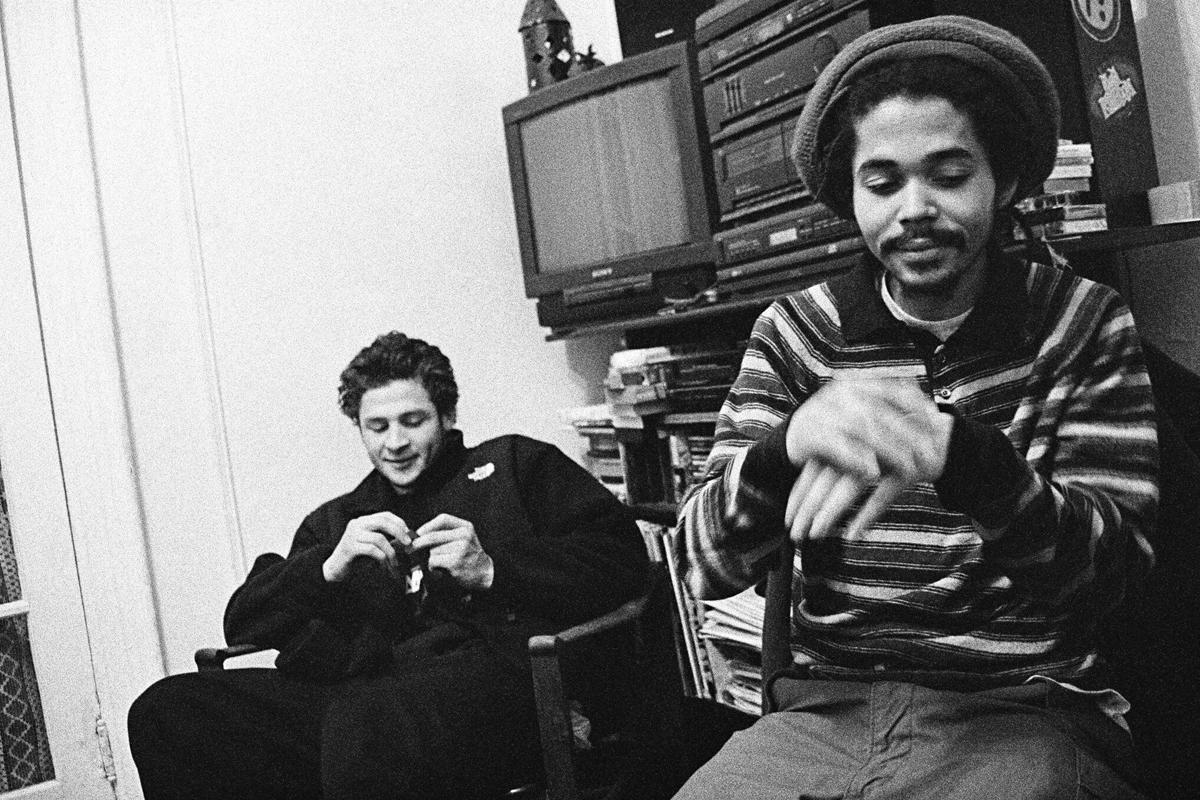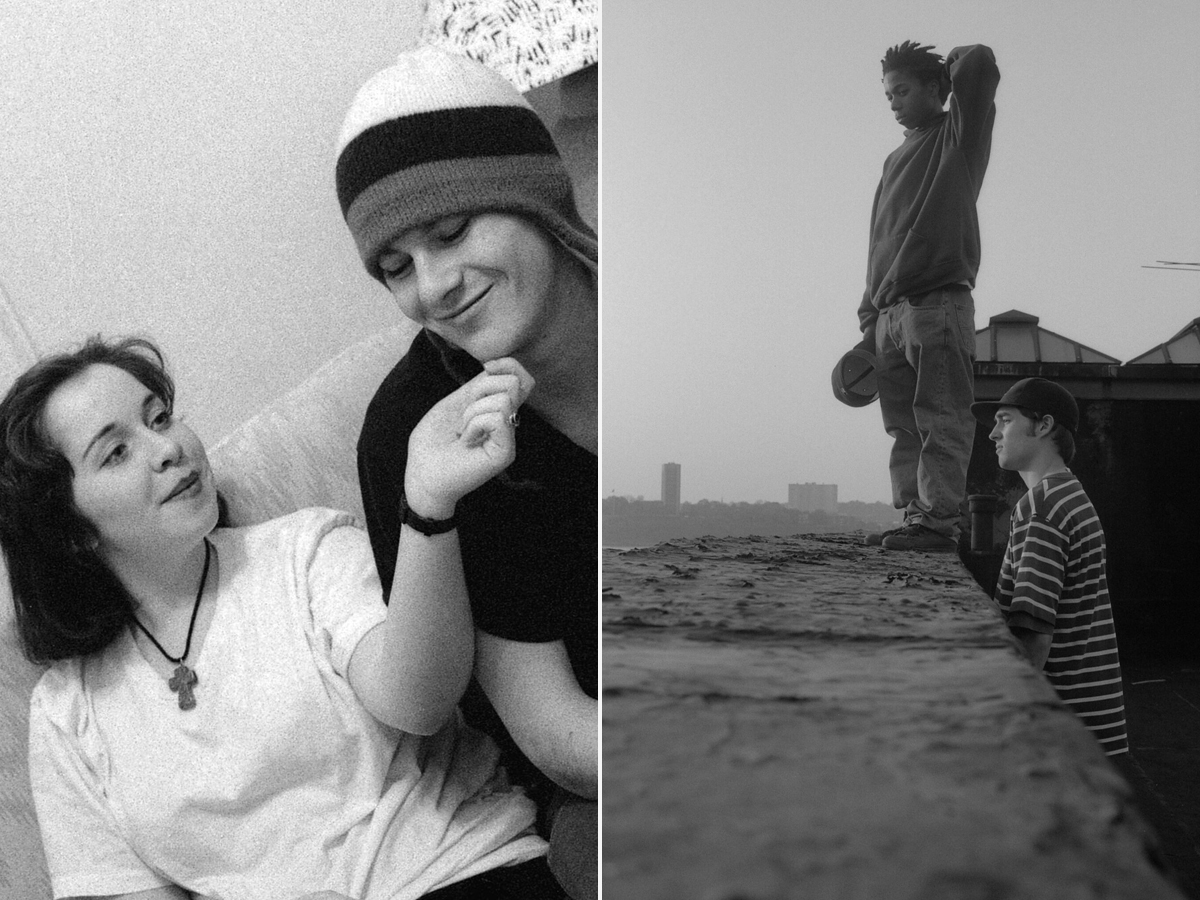Mel Stones and High’s “That’s a Crazy One” Photo Book
Images of kids in Washington and Tompkins Square parks in the early-to-mid 1990s

In early ’90s NYC, it seems that just about every sort of gathering featured a photographer with camera in hand. For a group of kids hanging out in Washington and Tompkins Square parks during that era, that role was filled by Mel Stones and High. The duo spent five years capturing the daily lives of their friends—roaming the city streets, hanging out on rooftops, skating, crashing loft parties, and a slew of late-night adventures. To them it was typical teen stuff. But to others, it was out of the ordinary. Their new book, “That’s a Crazy One” is a collection of images that captures the freedom and unconventionality of that era through the eyes of a group of close-knit teens who ended up being the inspiration for Larry Clark’s notorious film, “KIDS.” Culled from 2000+ images, the collection combines grainy photos and other memorabilia to create a yearbook of sorts for their gang, and a voyeuristic time capsule for the rest of us.
We spoke with Stones and High about the importance of publishing these personal photos, and why they decided to donate all the profits from the book’s sales.

Tell us a little about why these images are so special for you.
Stones: It sort of commemorates the life of the friends that we lost and gives a positive light to the time we had. New York has changed so much. It’s really a time capsule of what the city was like and what it was like to be a teenager during that time. It was pre-Giuliani and it was way more wild. We could do whatever we wanted. We weren’t over-policed. A lot of us were street kids so we found a family in each other and formed really tight bonds.
High: In addition to that we were able to save a lot of our old notebooks, our old drawing pads, so we have a lot of writings and drawings from our friends from that time that we were able to incorporate into the book as well as old punk rock flyers, flyers for the riots at the park, things of that nature, to further give context to the place and time.

Where does the title come from?
Stones: That’s full-on Ivan Perez. He was one of our friends and a dope skater, under-appreciated. That was his line, for anything, “Yoooo, that’s a crazy one!” We chose the title based on what really sums up our lifestyle or what was happening during that time in the city. It was like the highest crime rate, no social media. Every time I heard a skateboard, it was someone I knew. You could walk from Washington Square Park down to Tompkins and you’re definitely running into someone or figuring out where everyone is. That’s how we found each other.
What was your process for shooting?
High: We used primarily 1800 or 3200 film so we were able to take more shots at night—our whole lives were at night—and it was really able to capture the essence of the time because they’re really gritty. We’re shooting at night with no flash so there needs to be a certain amount of adjustments—open the aperture and allow people to actually stop moving for a second—if you want it to actually come out.
Stones: Film was such a sparse commodity. I had 24 or 36 pictures to take throughout an eight-hour time span so I was wasn’t like click, click, clic,k click, click. I was just, “Oh that looks cool,” or, “I like the light in here.” So I shot with intention and I shot very carefully because I couldn’t just waste my film. If you look at my photo strip it’s basically one roll film that followed me from the time I got to school until the next morning. That was my night and it was one frame of each place that I went. The way I shoot now is if I see something, I see it, and I take a picture of it. I wait and I’m like this is the moment, this is what I was looking for, and bang. It’s more so me watching and being a silent observer, like a fly on the wall, and that’s how I tried to shoot.

Was there anything you feel was incorrectly represented in “KIDS”?
High: The movie felt superficial. We were and we still are a family. We supported each other emotionally and financially and everything else. That was missed.
Your book, then, is a contrast to that in what way?
High: It shows the closeness that we all had and the love that we all had for one another. It’s a story over a five-year period of time, so that just shows how this group stayed together and supported each other through good times and bad. There are moments of seriousness in the book and there are some photos we were laughing and having a great time. Especially Harold (Hunter). He famous for being crazy and funny but there are pictures of him in the book that are far more serious because everyone has another side and that was his other side.
For me, that time represents freedom and disregard for convention
What does this era represent to you personally?
Stones: It’s hard not to romanticize it for me. For me, thinking about a New York where I could be a kid and use the streets as my playground and still feel safe and like nothing was going to happen compared to what it is now where it’s like, you ride your bicycle on the sidewalk and get arrested. That’s crazy. I remember Giuliani becoming mayor and changing the culture and hiring this massive police force and sort of changing the way the police interacted with people. For me that time represents freedom and disregard for convention. I really think that we were all just being ourselves and didn’t feel this pressure to conform to anything or any style or that sort of mentality. Being punk was never a style. It was, “I don’t want to fit in. I don’t want to get in line. I don’t want to be like her.” And I never did and I don’t think anybody I ever hung out with ever did.
Was putting the book together cathartic for you?
High: It was the worst and the best thing we’ve ever done. Most of our film has been sitting in storage for 20 years so to get contact sheets made and look at all of these images 20 years later, Mel and I were dying laughing at half of them and it was heartbreaking because we’ve lost a lot of friends.
Stones: We both knew that we had these pictures and a lot of people had asked us for them throughout the years because there’s that hoopla and everybody wants a picture of Harold and Justin Pierce. We knew we had them and I’m like, “I’m not putting their shit on a fucking T-shirt.” Losing those friends was really hard. I think the book was like a healing process. We were both like, “OK, it’s time,” and we went through them and we took a couple of bottles of wine and we cried and we laughed and we remembered everything. We would remember specific nights, what it smelled like, what the weather was like, and we ended up with this time line of incredible memories.

You’re donating the profits to the photography program at Lincoln High School, a public school in Brooklyn. Tell us about why you decided to do that.
Stones: The photography program at Lincoln was really exceptional. I had this photo teacher there—Howard Wallach—who saw that I had an eye. I didn’t have any money and he was like, “Here’s some film, have it shot by tomorrow morning and you can have it, it’s yours.” I was doing it as an art because I loved it as an art. My subject matter just happened to be my friends because that’s what I had access to.
I would go out all night, be in the club until four in the morning, go have breakfast and then go to school and go straight to the photo lab and spend my entire day in there. I would make him write notes to my teachers, “She’s working on a project!” So that’s what I went to school for. He is retired now. I told him, “This book would have not been possible without you.” The program that we’re donating to is his photography program, his legacy.
High: We’ve never wanted to take advantage of our friends or take advantage of the friends who have passed, so for us it’s extremely important to know that this book is being made for them and all profits are going to a New York City public school art program. This is just a time capsule for all of us together to enjoy and to have. We’re just trying to give it forward and help other kids the way that we were helped back then.
“That’s a Crazy One” is available to buy online now, with the profits going to Lincoln High School’s photography program.
Images courtesy of Mel Stones and High











